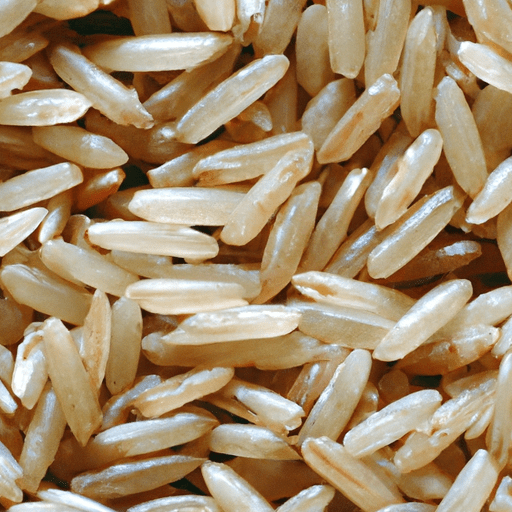All About Short Brown Rice: A Nutritious and Versatile Grain
When it comes to healthy and delicious grains, short brown rice often takes the spotlight. This humble staple has gained popularity in recent years due to its exceptional taste, versatility in cooking, and abundant health benefits. In this blog post, we will explore the world of short brown rice, including its unique characteristics, common uses, nutritional value, and some fascinating tidbits about its history. So, let’s dig in and discover why this grain is worth incorporating into your cooking repertoire!
The Taste and Texture
Short brown rice strikes a delightful balance between nutty and slightly sweet flavors. It boasts a chewy texture and a rich depth of flavor that sets it apart from its white rice counterparts. As the name suggests, short brown rice grains are shorter and plumper than long-grain brown rice. They have a pleasant, slightly sticky consistency when cooked, making them a perfect choice for a variety of recipes.
Common Uses in Cooking
Due to its versatility, short brown rice effortlessly complements both simple and elaborate dishes. It acts as a fantastic base for hearty grain bowls, pilafs, stir-fries, and stuffed vegetables. Its ability to absorb flavors makes it an ideal accompaniment to savory curries, stews, and even sushi. Additionally, short brown rice can be ground into flour for baking purposes, adding a delightful nuttiness to bread, muffins, and cookies.
Nutritional Powerhouse
Short brown rice stands out for its impressive nutritional profile. Unlike its refined counterpart, white rice, short brown rice retains the bran and germ layers during processing, resulting in a higher fiber content and a plethora of essential nutrients. It is rich in manganese, selenium, magnesium, and B vitamins, contributing to optimal brain function, energy production, and a healthy immune system. Moreover, short brown rice has a low glycemic index, making it an ideal choice for individuals watching their blood sugar levels.
Fun Facts and History
Brown rice, including short brown rice, has a long history deeply rooted in various culinary traditions. It has been consumed for thousands of years and is believed to have originated in Southeast Asia. While white rice gained popularity over time, brown rice held its ground as the go-to grain due to its superior nutritional value. Interestingly, brown rice was once considered a luxury enjoyed only by aristocrats in ancient China.
In recent years, with a growing interest in whole foods and healthier alternatives, short brown rice has reemerged as a culinary darling. Its versatility and nutrient density have captivated chefs and home cooks alike, bringing this ancient grain back into the spotlight.
Cooking Tips
Cooking short brown rice is quite straightforward. Here’s a simple guideline to achieve perfectly cooked grains every time:
- Measure out the desired amount of short brown rice and give it a thorough rinse under cold water to remove any excess starch.
- In a saucepan, combine the rinsed rice with water or broth using a 1:2 ratio (1 cup of rice to 2 cups of liquid).
- Bring the mixture to a boil over medium heat, then reduce the heat to low, cover with a tight-fitting lid, and let it simmer for 45-50 minutes.
- Once the rice is cooked and the liquid is absorbed, remove it from the heat and let it rest for 5-10 minutes before fluffing it with a fork.
Remember to adjust the cooking time slightly based on the desired texture—shorter time for a slightly firm texture or longer for a softer consistency.
Get Creative with Short Brown Rice!
Now that you’re armed with knowledge about short brown rice’s delightful taste, versatility, and nutritional benefits, it’s time to get creative in the kitchen! Add it to your favorite recipes or experiment with new culinary combinations. Whether you’re preparing a nourishing grain bowl or a comforting pilaf, short brown rice is sure to elevate your dishes with its hearty texture and rich flavors. So, go ahead and embrace the goodness of short brown rice in your cooking today!
Short Brown Rice
Origin: Short brown rice is a type of rice that originated in Asia, particularly in the regions of China and Japan. It has been cultivated for thousands of years in these areas and is now enjoyed worldwide.
Common Uses: Short brown rice is highly versatile and can be used in various dishes. It is often used as a base for pilafs, stir-fries, salads, and even desserts. It can also be a nutritious substitute for other grains like white rice, pasta, or couscous.
Nutritional Benefits: Short brown rice is considered a whole grain, which means it retains its bran and germ layers. These layers provide essential nutrients such as fiber, vitamins, and minerals. Additionally, it contains more fiber, protein, and complex carbohydrates compared to white rice since it hasn’t undergone the refining process that removes these nutrients.
Unique Properties: Short brown rice has a distinct nutty flavor and a chewy texture, making it a satisfying addition to a variety of dishes. It has a slightly shorter grain length compared to other types of brown rice, and its color can range from light tan to deep brown.
Historical Significance: Rice has played a significant role in the cultural and historical development of many Asian countries. In China and Japan, rice has been a staple food for centuries and is deeply integrated into the cuisine and traditions of these regions. Short brown rice, particularly in Japan, is highly regarded for its quality and is often associated with traditional dishes like sushi and onigiri.




Use the share button below if you liked it.
It makes me smile, when I see it.